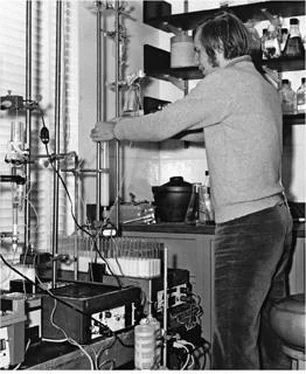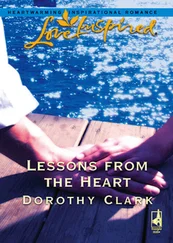James Watson - AVOID BORING PEOPLE - Lessons from a Life in Science
Здесь есть возможность читать онлайн «James Watson - AVOID BORING PEOPLE - Lessons from a Life in Science» весь текст электронной книги совершенно бесплатно (целиком полную версию без сокращений). В некоторых случаях можно слушать аудио, скачать через торрент в формате fb2 и присутствует краткое содержание. Жанр: Биографии и Мемуары. Описание произведения, (предисловие) а так же отзывы посетителей доступны на портале библиотеки ЛибКат.
- Название:AVOID BORING PEOPLE: Lessons from a Life in Science
- Автор:
- Жанр:
- Год:неизвестен
- ISBN:нет данных
- Рейтинг книги:5 / 5. Голосов: 1
-
Избранное:Добавить в избранное
- Отзывы:
-
Ваша оценка:
- 100
- 1
- 2
- 3
- 4
- 5
AVOID BORING PEOPLE: Lessons from a Life in Science: краткое содержание, описание и аннотация
Предлагаем к чтению аннотацию, описание, краткое содержание или предисловие (зависит от того, что написал сам автор книги «AVOID BORING PEOPLE: Lessons from a Life in Science»). Если вы не нашли необходимую информацию о книге — напишите в комментариях, мы постараемся отыскать её.
AVOID BORING PEOPLE: Lessons from a Life in Science — читать онлайн бесплатно полную книгу (весь текст) целиком
Ниже представлен текст книги, разбитый по страницам. Система сохранения места последней прочитанной страницы, позволяет с удобством читать онлайн бесплатно книгу «AVOID BORING PEOPLE: Lessons from a Life in Science», без необходимости каждый раз заново искать на чём Вы остановились. Поставьте закладку, и сможете в любой момент перейти на страницу, на которой закончили чтение.
Интервал:
Закладка:
A message soon came back from University Hall that no monies
existed for construction of new Biology Department facilities. Any expansion of the biology faculty would have to occur within the preexisting confines of the Biological Laboratories. This rebuff had an unexpected positive consequence. Administrative approval would be fastest for scientists already in situ, whose space requirements could be met by relatively inexpensive renovations of existing labs. Thus promoting Wally Gilbert to tenure was to prove much easier than we'd guessed the year before.Wally still had a heavy physics teaching load and was supervising the Ph.D. theses of several graduate students. Only after the August 1961 Moscow Biochemistry Congress did Wally use most of his free time for experimentation in molecular biology. He first demonstrated that single poly U molecules serve as templates for several ribosomes simultaneously. Then he revealed the presence of transfer RNA molecules at the carboxyl ends of growing polypeptide chains. Currently he was showing that the attachment of streptomycin to ribosomes causes misreading of the genetic code. Even with these demonstrations of extraordinary talents as an experimentalist, I feared great difficulty getting him appointed to the biology faculty. In their eyes, Wally and I were too similar in our semiobjectionable objectives.
Luckily, Paul Doty soon orchestrated an arrangement to give Wally tenure, not as a member of the Biology Department but as a member of the Committee on Higher Degrees in Biophysics. Toward this end I wrote to Arthur Solomon, the long-reigning head of biophysics at Harvard, that Wally was in the same league, intellectually and experimentally, as Seymour Benzer or Sydney Brenner. Franklin Ford soon guaranteed funds to back the new tenured biophysics slot, and Wally's promotion breezed through the ad hoc committee early in April 1964.
The approval process for Wally occurred when I was in Paris to lecture at an April meeting marking the fiftieth anniversary of the French Biochemical Society. There, for the first time, I announced evidence for the existence of two ribosomal sites that specifically bind transfer RNA. One site I called A in view of its function to bind incoming amino acid transfer molecules in the presence of messenger RNA codons. The second site I called P since it holds the growing polypeptide chains to the ribosomes. In ways yet to be determined, growing
polypeptide chains immediately moved from A sites to P sites after each new round of peptide bond formation. Toward the end of my lecture, I emphasized that we also expected to find along mRNA molecules signals for starting and stopping polypeptide synthesis. Our failure so far to find them may have reflected the fact that current cell-free systems for protein synthesis used only synthetic RNAs as templates. These contain no signals. Synthetic molecules likely worked as good templates only through mistakes in codon reading. Fearing afterward that my talk would be perceived as speculative, I was hugely relieved when Francois Jacob, never one for idle praise, called my lecture one of the best he had ever heard.I was at the time very proud to be a senior fellow of Harvard's Society of Fellows. The main task of the eight senior fellows each year was to choose a similar number of junior fellows whose terms ran three years. We were also expected to dine each Monday with the junior fellows in the society's wood-paneled quarters in Eliot House. The society's reputation for exemplary minds was still deserved. The evolutionary biologist Jared Diamond and Nobel Prize-winning chemist Roald Hoffman were both selected in 1962.
It was much more fun, I found, to sit next to junior fellows rather than senior fellows; utterly painful was getting caught beside either the acerbic but shy critic Harry Levin or the overly polite classicist Herbert Bloch. And though the philosopher Willard V. O. Quine may have been the brightest of all, his voice came alive only when talking about maps. One such evening per year would have been enough for me. Dinners became more agreeably animated after the economist Wassily Leontief took over as chairman in July 1964 and brought about the appointment as senior fellow of Boston's senior judge, the gossipy Charles Wyzanski, whose interests—intellectual as well as social— went far beyond the Harvard scene.
The historian Crane Brinton still presided over the society when I suggested inviting Princess Christina to one of our Monday night dinners. Soon I got the message that her royal presence might distract from its intellectual purposes. We had recently run into each other at the usually jammed coffee shop across from Widener Library. Antonia Johnson was with her, so the three of us shared a booth for lunch.
Much of our conversation centered on Antonia's current boyfriend in Philadelphia, who was doing biophysics research at the University of Pennsylvania. Several weeks later, I met Christina again at a waltz evening at the Parker House Hotel, where she discovered that I did not belong on a dance floor. I was the unlikely escort of the full-bodied blond bombshell Sheldon Ogilvy, whose college education in New York City had recently gone astray. Somehow she was on the guest list for this minor monthly Boston society dance. Exuding the happy insouciance of a Truman Capote heroine, Sheldon sipped Brandy Alexanders when we sat together at the Club Casablanca beneath the Brattle Theatre.Early in May, Christina and I were both at a Saturday night dance in Locust Valley, on Long Island's Gold Coast. It marked the twenty-first birthday of Deming Pratt, Nancy Doe's Radcliffe roommate. A marriage bond once connected Deming's branch of the oil-rich Pratt family to the royal Bernadottes of Sweden. Nancy told me I was to come, so I arranged to stay that night at the Cold Spring Harbor Laboratory, only a fifteen-minute drive to the east. The scotch and soda I consumed over a pre-dance supper at the Piping Rock Club gave me the courage to once again subject Christina to my lack of rhythm. Much of the evening I gossiped with the Texas department store heiress Wendy Marcus and her escort, a New York Times Latin America correspondent. Leaving after most guests had already departed, I absentmind-edly drove off without turning on the headlights. Immediately I was pulled over by a local police officer, who mercifully only told me to stay on the shoulder until my head cleared. The times then were much more foolishly forgiving than today of intoxication behind the wheel. Later I shuddered at the thought of the publicity that would have ensued had the policeman been more hard-nosed and done his duty to haul me in.
The arrival of summer left Sheldon Ogilvy no reason to remain in Cambridge and she became ensconced at 336 Riverside Drive in New York City. Though no relation of the advertising whiz David Ogilvy, she got hired as the receptionist at Ogilvy and Mather's offices on Madison Avenue. I popped in to see her when I came down late in July
for the 1964 International Biochemical Congress at the Hilton Hotel. Francis Crick was there to give one of the congress's keynote speeches. In my talk, I slipped in a slide showing a photo from the Nobel Prize dinner of Francis apparently peering inappropriately at Princess Désirée. Later, to make amends, I introduced Francis to Sheldon at a lighthearted dinner at the piano bar restaurant on the roof of the St. Regis. The next day Francis telephoned her at work to get her address and phone number for his next trip to the States. I only learned this in early December, when Sheldon wrote telling me that she would be having lunch with Francis again on his way back to England, and that she first felt a bit odd in accepting his attention and then a bit odd about being so scrupulous, given that the three of us had had so much fun together at the St. Regis.No longer a receptionist, Sheldon was on to teaching foxtrots to what she called “little WASP girls” in Westchester so they would look presentable when they suddenly blossomed into debutantes. In her note, she expressed regret at backing out with virtually no notice from an October weekend with me at Cold Spring Harbor. The previous night's activities, she explained, had left her too black and blue to appear in public. Discretion kept me from asking for details. Less athletically, she was immersed in Virginia Woolf and wanted my help to win readmission to Barnard and dispel the cloud hanging over her since her abrupt withdrawal. Although I could see that her cause would benefit from a supportive letter, it was not all clear to me what I could credibly write.
Читать дальшеИнтервал:
Закладка:
Похожие книги на «AVOID BORING PEOPLE: Lessons from a Life in Science»
Представляем Вашему вниманию похожие книги на «AVOID BORING PEOPLE: Lessons from a Life in Science» списком для выбора. Мы отобрали схожую по названию и смыслу литературу в надежде предоставить читателям больше вариантов отыскать новые, интересные, ещё непрочитанные произведения.
Обсуждение, отзывы о книге «AVOID BORING PEOPLE: Lessons from a Life in Science» и просто собственные мнения читателей. Оставьте ваши комментарии, напишите, что Вы думаете о произведении, его смысле или главных героях. Укажите что конкретно понравилось, а что нет, и почему Вы так считаете.












